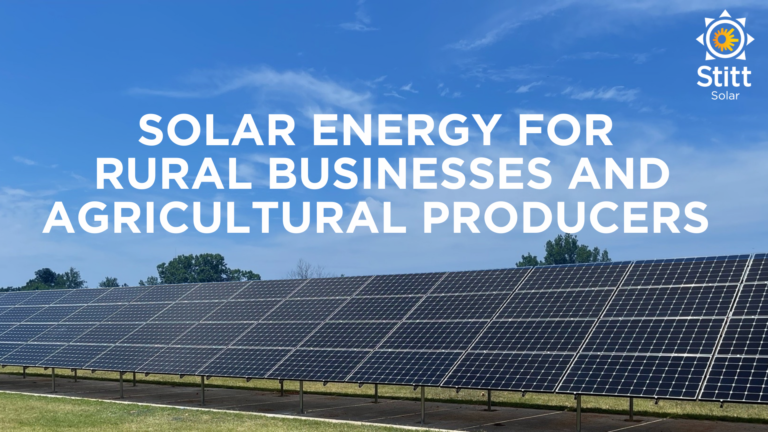Powering rural Arkansas with clean energy

Agricultural business plays a significant role in Arkansas’ economic landscape. The state’s diverse agricultural sector encompasses crop farming, livestock production, poultry farming, aquaculture, and specialty agriculture. The success of agricultural businesses translates into economic growth, improved infrastructure, and increased access to services in rural areas.
Farmers constantly face substantial investments in equipment, infrastructure, labor, and resources such as electricity. Rural businesses need a significant amount of energy to power machinery and processing facilities, impacting farmers’ budgets and profits. However, by embracing solar energy, these businesses can harness the abundant and free power of the sun and reduce or even eliminate energy costs in the long run.
It’s important to clarify that solar energy has the reputation of being expensive, however this natural energy source represents a transformative force that can drive rural businesses and farming practices towards sustainability, self-sufficiency, and economic prosperity. Due to current government incentives, agricultural businesses can have up to 85% of the cost of their systems covered by incentives. Let’s explore the solar incentives available for rural businesses that make the decision to invest in solar energy more financially attractive:
Up to 50% of USDA Reap Grants for rural businesses and farmers.
USDA is making the $1 billion in grants available under the Rural Energy for America Program (REAP), with funding from the Inflation Reduction Act. The USDA REAP grants aim to support rural businesses and agricultural producers in implementing renewable energy systems. These grants provide financial assistance to cover a portion of the costs associated with installing solar energy. “This is a great opportunity to promote rural prosperity for farmers and small businesses. – John McAuliff, Senior Climate Advisor Rural Business-Cooperative Service.
Program Period, Open for Fiscal Years 2023 & 2024, Application Windows:
- June 30, 2023
- September 30, 2023
- December 31, 2023
- March 31, 2024
- June 30, 2024
- September 30, 2024
For more detailed information, you can visit https://www.rd.usda.gov/programs-services/energy-programs/rural-energy-america-program-renewable-energy-systems-energy/ar.
30% of Federal Tax Credit
When you install and own solar energy in your business, you earn 30% of the federal tax credit. That means you’ll get a credit for your income taxes, lowering your tax bill. *It is recommended to consult with a tax professional or accountant. They can assess your specific circumstances and provide guidance on maximizing the benefits of this incentive based on your unique tax situation.
Accelerated depreciation.
Accelerated depreciation allows businesses to recover the cost of their solar investment more quickly. By depreciating the system over a shorter period, typically five years under the Modified Accelerated Cost Recovery System (MACRS), businesses can realize larger tax deductions in the early years of the system’s operation and accelerates the ROI timeline. This translates to improved cash flow, as the tax savings can be reinvested into the business or used to offset other expenses.
By leveraging solar energy to become energy producers, farmers and rural businesses can turn their land into an asset, fostering economic growth and sustainability.
With over 40 years of experience installing solar, Stitt Solar will be your best partner to help you to gain energy independence and save money for a lifetime.
Find out more on the www.stittsolar.com or call (479) 636 8745




